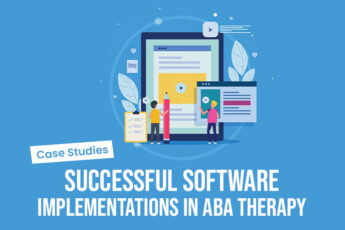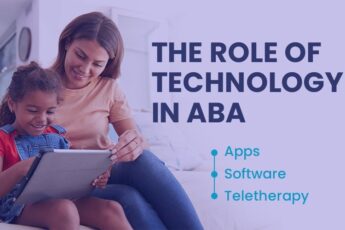Applied Behavior Analysis (ABA) is a powerful tool for improving the lives of individuals with autism and other developmental disabilities. Yet, the success of ABA therapy relies heavily on the effectiveness of its implementation. This is where technology steps in, offering a chance to streamline processes, enhance data collection, and ultimately, improve the client experience. But for technology to truly be an asset in ABA, it needs to be intuitive and user-friendly for practitioners.
Understanding the Needs of ABA Professionals:
ABA practitioners are busy individuals navigating a complex world of assessment, intervention, and data analysis. Their time is precious, and their focus is on delivering the highest quality care. To design intuitive user interfaces (UIs) for ABA software, we need to consider their specific needs and challenges:
- Efficiency: Practitioners need software that allows them to quickly and easily document sessions, manage client data, and track progress.
- Accessibility: The UI should be adaptable to various skill levels and technological proficiency. Simple navigation and clear visual cues are crucial.
- Customisation: Each client is unique, and practitioners need the flexibility to tailor interventions and track specific data points.
- Data Visualization: Complex data needs to be presented in a clear and understandable format to facilitate informed decision-making.
- Security and Privacy: Client data is sensitive and requires robust security measures.
Designing for Intuitive Use:
Here are key principles to guide the design of intuitive UIs for Applied Behavior Analysis (ABA) software:
1. Keep it Simple: Avoid clutter and unnecessary complexity. Focus on essential functions, prioritize key information, and use clear and concise language.
2. Visual Hierarchy: Use visual cues such as color, size, and contrast to guide users through the interface. Highlight important information and provide clear visual feedback for actions.
3. Logical Flow: Organize information in a way that feels natural and intuitive. Use consistent layouts, menus, and navigation patterns throughout the application.
4. Intuitive Interactions: Design actions that are easily understood and predictable. Use familiar patterns like buttons, sliders, and drop-down menus. Provide clear instructions and tooltips when necessary.
5. Feedback and Progress: Provide immediate feedback for actions and ensure users are aware of their progress. Use visual indicators, notifications, and progress bars to keep users engaged and informed.
6. Data Visualization: Present complex data in a way that is easily digestible. Use charts, graphs, and dashboards to provide insights and trends at a glance.
7. Customization and Personalization: Allow practitioners to tailor the interface to their specific needs. Offer options to adjust settings, customize reports, and personalize data views.
8. Mobile Optimization: Ensure that the software can be accessed on mobile devices, enabling practitioners to document sessions and track progress on the go.
Examples of Intuitive Applied Behavior Analysis (ABA) Software:
- Behaviour Tracker: A simple and user-friendly app that allows practitioners to record data, track progress, and generate reports.
- ABASquare: A comprehensive platform that includes assessment tools, intervention planning, data analysis, and progress tracking.
- Cognito: A software specifically designed for individuals with autism, offering engaging activities and personalized learning experiences.
Conclusion: A Future of Seamless Applied Behavior Analysis (ABA) Practice
By adhering to these principles and leveraging the power of intuitive design, we can create ABA software that empowers practitioners to deliver the best possible care. DIBS understands the unique needs of ABA practitioners and is committed to developing innovative software solutions that simplify workflows, enhance efficiency, and ultimately improve client outcomes.
With a focus on intuitive interfaces and cutting-edge technology, DIBS empowers ABA practitioners to unlock the full potential of evidence-based interventions, creating a future where technology seamlessly integrates with human expertise to drive positive change for individuals with disabilities.







Leave a Comment